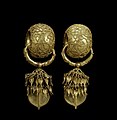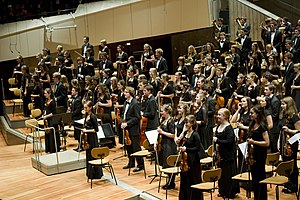Portal:The Arts
Featured articles -

Musidora: The Bather 'At the Doubtful Breeze Alarmed', also known as The Bather, is a name given to four nearly identical oil paintings on canvas by English artist William Etty. The paintings illustrate a scene from James Thomson's 1727 poem Summer in which a young man accidentally sees a young woman bathing naked and is torn between his desire to look and his knowledge that he ought to look away. The scene was popular with English artists as it was one of the few legitimate pretexts to paint nudes at a time when the display and distribution of nude imagery was suppressed. (Full article...)

Agrippina (HWV 6) is an opera seria in three acts by George Frideric Handel with a libretto by Cardinal Vincenzo Grimani. Composed for the 1709–10 Venice Carnevale season, the opera tells the story of Agrippina, the mother of Nero, as she plots the downfall of the Roman Emperor Claudius and the installation of her son as emperor. Grimani's libretto, considered one of the best that Handel set, is an "anti-heroic satirical comedy", full of topical political allusions. Some analysts believe that it reflects Grimani's political and diplomatic rivalry with Pope Clement XI. (Full article...)
The Honan Chapel (Irish: Séipéal Uí Eonáin, formally Saint Finbarr's Collegiate Chapel and The Honan Hostel Chapel) is a small Catholic church built in the Hiberno-Romanesque revival style on the grounds of University College Cork, Ireland. Designed in 1914, the building was completed in 1916 and furnished by 1917. Its architecture and fittings are representative of the Celtic Revival movement and evoke the Insular art style prevalent in Ireland and Britain between the 7th and 12th centuries. (Full article...)
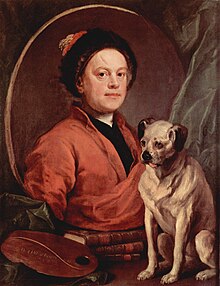
The Four Stages of Cruelty is a series of four printed engravings published by English artist William Hogarth in 1751. Each print depicts a different stage in the life of the fictional Tom Nero. (Full article...)

Sesame Street is an American educational children's television series that combines live-action, sketch comedy, animation, and puppetry. It is produced by Sesame Workshop (known as the Children's Television Workshop until June 2000) and was created by Joan Ganz Cooney and Lloyd Morrisett. It is known for its images communicated through the use of Jim Henson's Muppets, and includes short films, with humor and cultural references. It premiered on November 10, 1969, to positive reviews, some controversy, and high viewership. It has aired on the United States national public television provider PBS since its debut, with its first run moving to premium channel HBO on January 16, 2016, then its sister streaming service (HBO) Max in 2020. (Full article...)
Carmen (French: [kaʁmɛn] ) is an opera in four acts by the French composer Georges Bizet. The libretto was written by Henri Meilhac and Ludovic Halévy, based on the novella of the same title by Prosper Mérimée. The opera was first performed by the Opéra-Comique in Paris on 3 March 1875, where its breaking of conventions shocked and scandalised its first audiences. Bizet died suddenly after the 33rd performance, unaware that the work would achieve international acclaim within the following ten years. Carmen has since become one of the most popular and frequently performed operas in the classical canon; the "Habanera" and "Seguidilla" from act 1 and the "Toreador Song" from act 2 are among the best known of all operatic arias. (Full article...)

The Royal Gold Cup or Saint Agnes Cup is a solid gold covered cup lavishly decorated with enamel and pearls. It was made for the French royal family at the end of the 14th century, and later belonged to several English monarchs before spending nearly 300 years in Spain. It has been in the British Museum since 1892, where it is normally on display in Room 40, and is generally agreed to be the outstanding surviving example of late medieval French plate. It has been described as "the one surviving royal magnificence of the International Gothic age". According to Thomas Hoving, former director of the Metropolitan Museum of Art in New York, "of all the princely jewels and gold that have come down to us, this is the most spectacular—and that includes the great royal treasures." (Full article...)

Master Juba (ca. 1825 – ca. 1852 or 1853) was an African-American dancer active in the 1840s. He was one of the first black performers in the United States to play onstage for white audiences and the only one of the era to tour with a white minstrel group. His real name was believed to be William Henry Lane, and he was also known as "Boz's Juba" following Dickens's graphic description of him in American Notes. (Full article...)

"Indian Camp" is a short story written by Ernest Hemingway. The story was first published in 1924 in Ford Madox Ford's literary magazine Transatlantic Review in Paris and republished by Boni & Liveright in Hemingway's first American volume of short stories In Our Time in 1925. Hemingway's semi-autobiographical character Nick Adams—a child in this story—makes his first appearance in "Indian Camp", told from his point of view. (Full article...)





































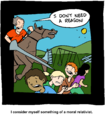
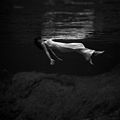
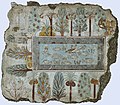




























































![Image 103Madonna and child at Chiaroscuro], by Bartolomeo Coriolano (edited by Durova) (from Wikipedia:Featured pictures/Artwork/Others)](http://upload.wikimedia.org/wikipedia/commons/thumb/4/49/Mary_Coriolano2.jpg/91px-Mary_Coriolano2.jpg)





